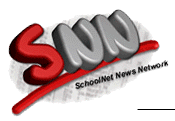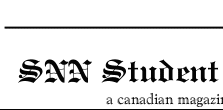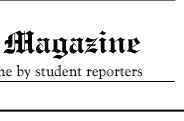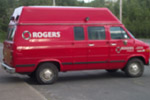 |
 |
|||||
 |
||||||
 |
||||
 |
||||
 |
||||
HOOK, LINE & NET 2001
Live... at Roger’s Cable, Grand Falls-Windsor!
By: Sarah King, Ascension Collegiate, Bay Roberts and Erika Lavers, Roncalli Central High, Port Saunders, NF
 On Tuesday, June 26th, as part of STEM~Net’s annual Hook, Line & Net Conference, we had the opportunity to participate in a hands-on workshop on TV production. The presentation was located off-site, at the Roger’s Cable building in Grand Falls-Windsor. Brian Mosher, media teacher at Gander Collegiate opened his session by bragging about the amount of video production equipment available to the students in his classes, upwards of $180 000 worth!
On Tuesday, June 26th, as part of STEM~Net’s annual Hook, Line & Net Conference, we had the opportunity to participate in a hands-on workshop on TV production. The presentation was located off-site, at the Roger’s Cable building in Grand Falls-Windsor. Brian Mosher, media teacher at Gander Collegiate opened his session by bragging about the amount of video production equipment available to the students in his classes, upwards of $180 000 worth!
He started with a brief introduction to a TV studio and introduced us to the basic terminology used by TV producers and camera directors. The set, for example, is the scenery and props that make up a scene in a show. For a news show, the set would most likely consist of a news desk against a plain coloured backdrop, with props such as coffee mugs and papers, etc.
Mosher then introduced us to the TV camera, both in field mode (ready to be hoisted onto a shoulder, attached to a power pack, and carried off into the ‘wild blue yonder’) and in studio mode (set up on a tripod and configured so that the operator can stand comfortably behind the camera and operate all functions such as zoom, focus, etc. from behind the camera itself). A TV camera differs from a video camcorder in that it contains no tape, no levers. As Mosher described it “it’s just a big hunk of electronics.” After outfitting one of the participants in full “field gear” with a 25 pound camera on his shoulder and 15 pound power pack strapped to him, Mosher moved the session on to the subject of lighting.
He explained how ‘gels’ are used over top of the lights to create different coloured backdrops or splashes of colour on the plain curtain behind the subject. He also demonstrated the use of mylar to soften the lighting tone or “diffuse the light.” Mosher explained the use of pink and blue gels to tone down or warm up a person’s skin tone.
Mosher then described the different tools used in the field of sound to enhance the quality. Wind, or “spit” socks cover hard consonants or “wind rumbles” on a lapel microphone. A “cat” is used to perform the same functions on larger microphones.
After we were all thoroughly stupefied by the amount of information we could absorb in one presentation, Mosher simulated a newscast, using two participants in his session as the “anchors”. Mosher then explained the beauty of the control room, and the importance of communication between camera operators and producers in the control booth. Without the magic of communication, a TV show would be choppy and un-coordinated. The “broadcast” was edited and put together with sound and graphics.
Between the actual cold hard facts and the detailed reminisces of previous TV shows and events covered , Mosher found time to dispense “helpful advice” for would-be TV producers. “Always use a tripod”, “Always secure your camera”, and “Asphalt gets hot!”, he counsels!